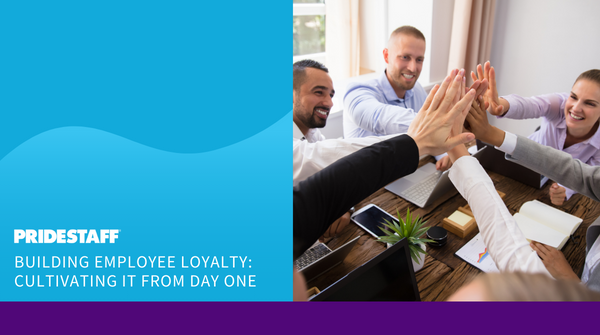Building Employee Loyalty: Cultivating It from Day One

The success of any organization hinges on the quality of its products or services—and the strength of its employees.
What is Employee Loyalty?
Employee loyalty can be defined as a worker’s commitment and dedication to the success of their employer’s business goals and objectives. Loyal employees exhibit a higher degree of enthusiasm and involvement in their work, going above and beyond what is expected. This unwavering support isn’t rooted in contractual obligation but in a genuine belief in the company’s mission and an earnest desire to contribute to its success.
What Benefits Does Loyalty Have for Employers?
Loyal employees are often more productive, contributing to increased output and higher quality of work. They tend to stay with the company longer, reducing turnover costs and retaining valuable institutional knowledge. Moreover, loyal employees can become brand ambassadors, positively influencing the company’s reputation both internally and externally.
Strategies for Building Employee Loyalty From Day One
Employers have countless opportunities to earn and grow employee loyalty, beginning with an employee’s first day. From that initial impression to every subsequent day on the job, every interaction and experience can strengthen or weaken their commitment to your organization.
Consider the following strategies to motivate employee loyalty:
- Offer Competitive Compensation and Benefits. Competitive wages and comprehensive benefits packages are crucial in making employees feel valued, an important factor in motivating loyalty. Beyond health insurance and retirement plans, consider offering perks that show you care about your employees’ personal and professional well-being, such as wellness programs and flexible working hours.
- Make a Great First Impression. The journey to cultivating long-lasting employee loyalty begins with the first impression your organization makes on new hires: a welcoming, informative, and organized onboarding process. This first step is about more than just paperwork and formalities; it’s an opportunity to immerse new employees in the company culture, values, and mission. An effective onboarding program sets clear expectations, provides essential resources, and establishes a support system that makes newcomers feel valued and part of the team from the outset. By investing time and effort into making these first days positive and productive, employers lay the groundwork for a loyal, engaged workforce.
- Recognize and Reward Achievements. Acknowledgment of hard work and achievements goes a long way in building loyalty. Implementing employee recognition programs can motivate and ensure employees feel appreciated for their contributions. Rewards don’t always have to be monetary; sometimes, a public acknowledgment or an extra day off can be equally impactful.
- Invest in Professional Development. Employees are more likely to be loyal to an employer who invests in their growth and development. Offering training programs, workshops, and courses helps employees enhance their skills and signals the company’s commitment to their career advancement.
- Conduct Stay Interviews. Stay interviews are a powerful yet often underutilized tool in the employee engagement arsenal. Conducting stay interviews at regular intervals can show employees that their happiness, well-being, and job satisfaction are paramount to the organization. These interviews provide a forum for employees to voice their experiences, concerns, and aspirations within the company. By asking questions about what motivates them to stay, what they value in their role and environment, and any changes they would like to see, managers can gain invaluable insights into improving the workplace while reinforcing their commitment to employee satisfaction.
Partner With PrideStaff
Building a culture of loyalty begins the moment an employee walks through your door. PrideStaff can smooth the journey. Contact your local PrideStaff recruiting experts to build a more loyal and engaged workforce today!
Related Posts
Recognizing Burnout: Signs, Symptoms, and Strategies for Prevention



